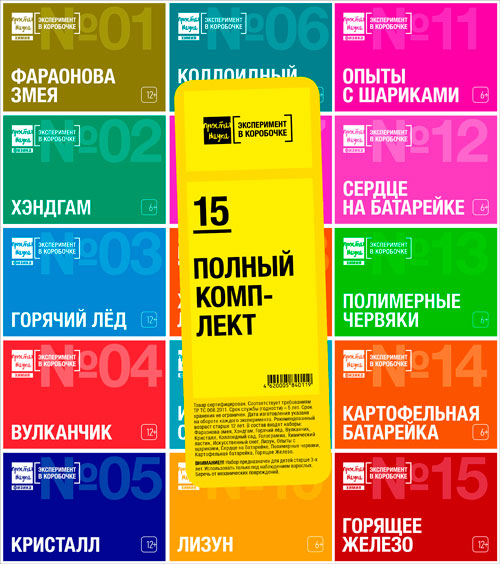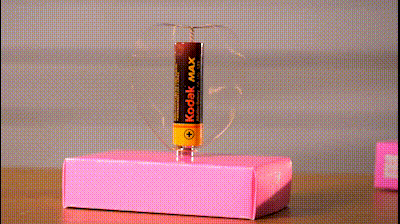
This story began in February 2013, when we posted a
video on the Heart on Battery experiment on youtube (the video was timed to February 14). Then it was just another of our videos, which scored only a few thousand views. And who would have thought that this could lead to something more?
But a year later
This experiment entered the third volume of the book "Simple Science". In fact, we just took screenshots from the first video and added text. May still remember the
post on Giktaime. A set was released for the book, which included, among other things, a neodymium magnet and copper wire with a battery.

It must be said, then the experiment was from the category of complex, and only a man with “straight arms” could repeat it. The reader needed to put a lot of effort and effort, and as a reward to get an amazing sight.
From the reviews it became clear: the experience really was too tough for many. The main difficulty was in the bend of the wire: it should have a symmetrical shape, and below the contacts should be properly bent.
I had to see this personally during the master classes for children. After a collision with a difficulty, and if there is no person near who could tell how to get out of this situation, the child loses interest and throws the experiment. Although it costs him a little help at the stage of bending the wire, how it all turns out, and there is no limit to joy.
Three years have passed. In May of this year, a series of “Experiments in a Box” required the development of several new kits. And here I again remembered the "Heart on the battery." But if in the book it was possible to use a couple of “difficult” experiments among a dozen simple, then in sets where there is only one experiment, this is no longer acceptable.
Problems
At least three problems required solutions:
- free and light, but at the same time, confident contact between the wire and the magnet, which is located below (the diameter of the magnet is 8 mm, and the battery is 10 mm);
- bend several thousand identical copper “hearts” without using automatic equipment (it is simply inappropriate to use it in our volumes);
- during transportation the form of the wire must be maintained, without any changes.
Solutions
It took almost a month to find solutions, but the result was worth it!
- Following the usual logic, the battery was placed on a magnet with its flat side (negative contact). But then for the contact of the wire with the magnet was only 4 mm (this is the height of the magnet). It is clear that this required a more accurate bend, and the likelihood that “something goes wrong” increased. Putting the battery upside down would solve the problem of free space, but it would make the design less stable.
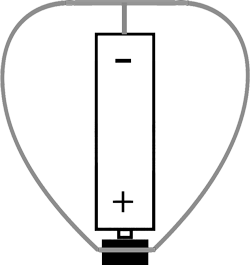
They came out of the situation as follows: they added a large platform in the form of a box and firmly “connected” the entire structure. Simply put, they put a washer under the box, a magnet on top of the box and only then a battery. The design turned out to be very stable, which at first was difficult to imagine. Thus, the packaging has become part of the experiment, which is only a plus.
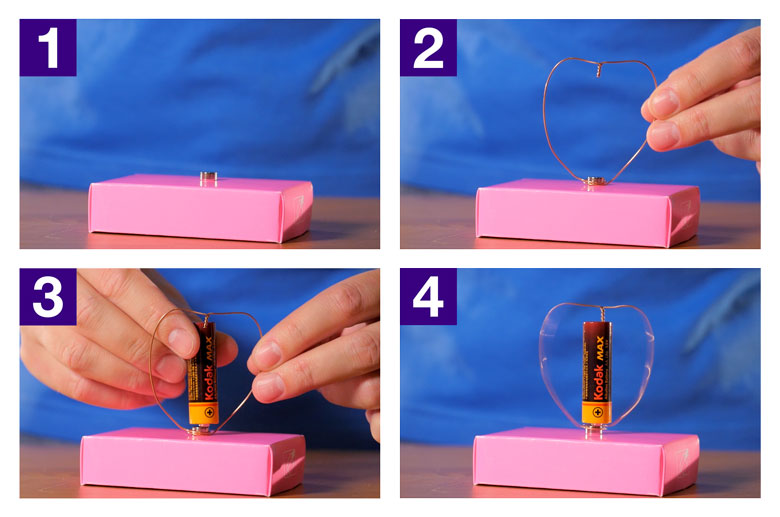
- The following problem was solved in two stages: we made a prototype of a snap from wood, and then produced an ideal sample on a 3D printer.
A wooden prototype was made in the village from improvised means, but it was possible to catch the essence the first time.

Then there was already a trick: 3D model in 123D Design, transfer to CURA and print on Wanhao Duplicator i3. Plastic used ABS and PLA, but did not feel a significant difference.
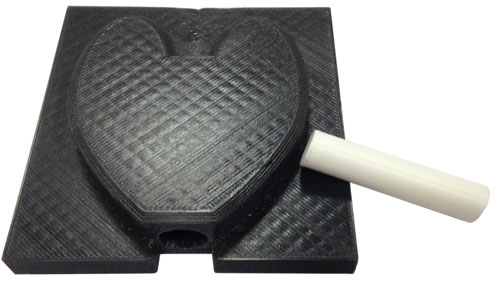
Now even if the equipment breaks down or is lost (which has already happened), we print it in three hours, and again “copper hearts” can be produced on an industrial scale. And yes, it turns out that every heart is “handmade”;)

- But the third problem manifested itself only after we did everything and began to pack. We decided to check what will happen if you shake the box a lot? As a result, not “heart” was taken out of the box, but an artistic curl. Moreover, each time it turned out to be individual ... and not working.
If you have ever solved inventive problems, you probably noticed: the best solution is always the simplest. I'm not sure that we got the simplest solution, but at that time it was saving. He rescued an ordinary stapler: small parts are packed in a bag, and it is fastened with a clip to the box.
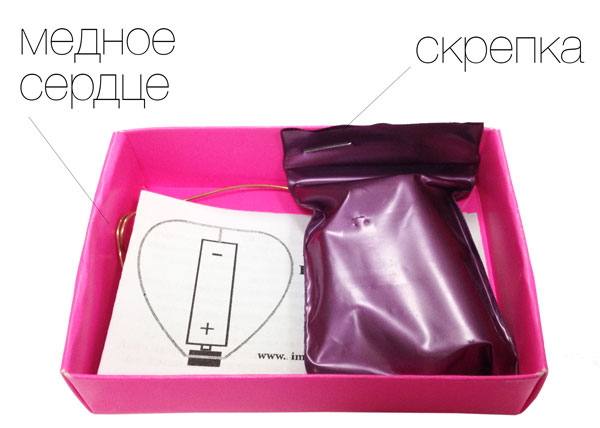
Now you can shake the box as much as you want, the shape of the wire will remain unchanged. By the way, if anyone has a simpler idea, please share. From the side of the decision may be more obvious.
Name replacement
It would seem that all the problems behind! But it was not there. Sales it became clear that this set is sold worse than the rest. And the name was to blame. Until the whole circulation of the boxes was sold, we worked with the title "Heart on a battery." And only in September the circulation ended, and a new one was launched, with the inscription “Eletkromotorchik”. There is no certainty that this is a victory, but the situation has already changed and leveled off in relation to the sales of other sets.
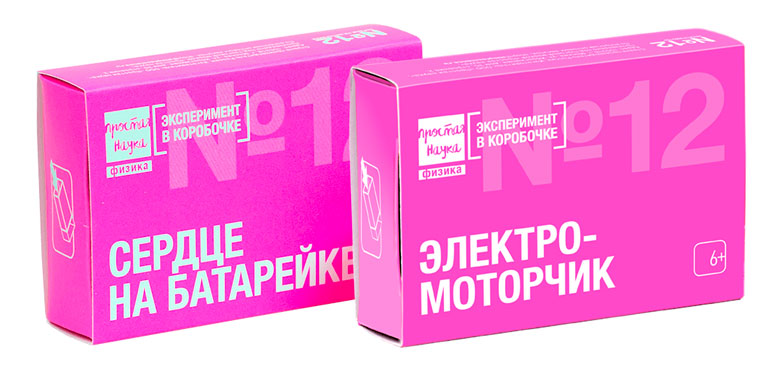
From the side it may seem that all the decisions and our mistakes are obvious at once, and they can be solved once or twice, but in reality this is not the case, unfortunately.
Our task is to make exactly the product, because all the experiments and phenomena are known a long time ago, and we do not bring anything new from a scientific point of view. But such a set has never been done before, and it is pleasant to feel in some way a pioneer;)
Video
As a result, look at the video:
ps By tradition, I publish a promo code for a 20% discount: geektimes. Acts on all our books "
Simple Science " and the sets "
Experiments in a box ." It must be entered when placing an order on the
site and click "apply".
